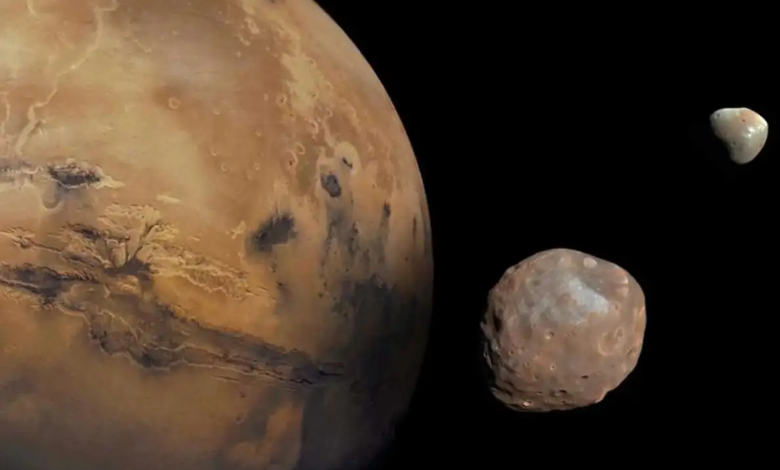
A Moonlit Enigma: Did Mars Once Capture and Crack a Comet?
Mars, our neighboring planet, is orbited by two peculiar moons: Phobos and Deimos. Unlike Earth’s moon, these Martian satellites are small, oddly shaped, and their origins remain a puzzle. A recent scientific study has proposed an intriguing hypothesis: Mars might have once trapped and fractured a comet, giving rise to Phobos and Deimos.
The Mystery of Martian Moons
Phobos and Deimos are unlike typical moons found around planets. They are diminutive, with Phobos being only 22 kilometers (14 miles) wide and Deimos a mere 12 kilometers (7.5 miles) in diameter. Their orbits are unusually close to Mars, with Phobos passing just 6,000 kilometers (3,700 miles) from the planet’s surface. Moreover, their dark, carbonaceous composition resembles comets more than traditional moons.
A Collision with a Comet?
According to the recent study, Mars may have encountered a passing comet billions of years ago. The gravitational pull of Mars could have torn the comet apart, leaving behind fragments that were subsequently captured into orbit around Mars. Over time, these captured fragments could have merged to form Phobos and Deimos.
Signs of a Shared Origin
The study points out spectral similarities between Phobos and Deimos, indicating a common ancestry. Furthermore, their dark, primitive composition aligns with that of comets, lending credence to the comet capture hypothesis.
Further Investigation Needed
While the comet capture theory offers a compelling explanation for the unique characteristics of Phobos and Deimos, additional evidence is required to validate it. Future missions to Mars, particularly those involving sample return from the moons’ surfaces, could provide crucial data to confirm or refute this hypothesis.
Continuing the Quest for Answers
The origin of Mars’ moons remains a captivating enigma. The comet capture theory introduces a fresh perspective to this ongoing inquiry. As scientists delve deeper into the history of Mars, unraveling the mysteries surrounding Phobos and Deimos promises not only to illuminate their formation but also to offer valuable insights into the early solar system and the intricate dynamics among celestial bodies.”





